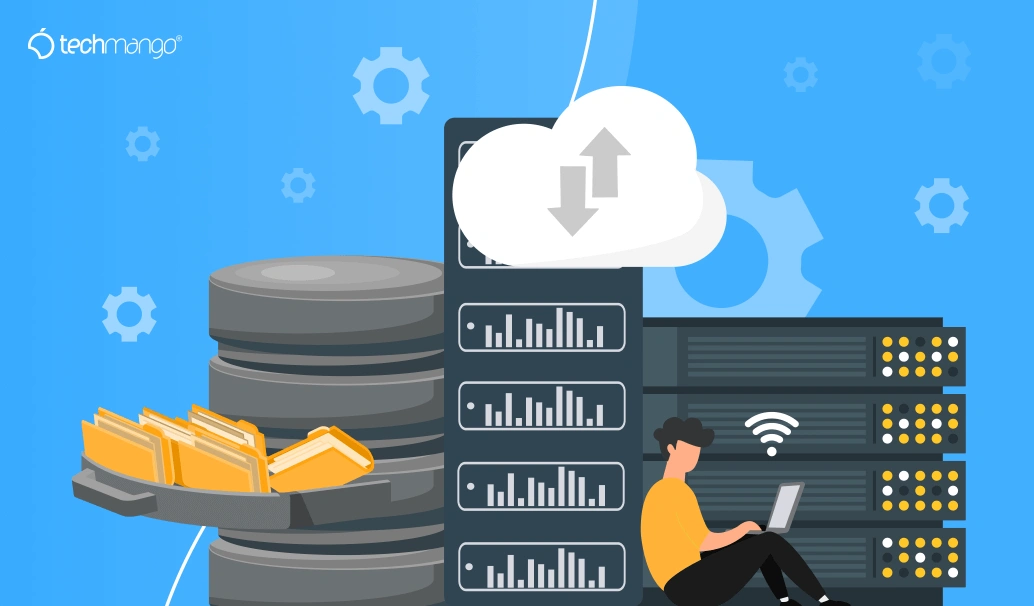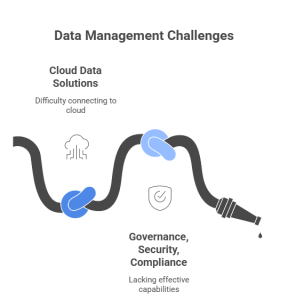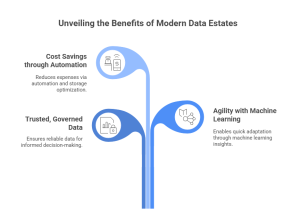Why Modern Businesses Need a Data Estate
Every business produces vast quantities of data, yet few handle it in a manner that drives growth. A modern data estate enables companies to transcend disjointed systems and towards integrated, governed, and insight-ready environments. Without it, businesses will lose out on efficiency, customer insight, and competitive edge.
The Challenges of Legacy Data Systems
Most IT leaders remain anchored to legacy platforms that:
- Can’t scale to manage the increasing volumes of data.
- Struggle to connect with cloud data solutions
- Don’t have effective governance, security, or compliance capabilities

These drawbacks make it more difficult to extract value from data lakes or provide advanced analytics on a timely basis.
Benefits of a Modern Data Estate
When companies invest in big data modernization, they receive:
- Faster, more trustworthy insights from structured and unstructured data.
- Lower costs of operation with cloud-native scalability.
- A basis for sophisticated advanced data management and AI-based analytics.
In short, modernisation transforms data into a genuine business asset.
How Data Engineering Services Enable Modernisation
Building Efficient Data Pipelines
Data engineering services form the cornerstone of estate modernisation. Through designing scalable data pipelines, companies ensure smooth passage of data from various sources into a centralised, reliable environment. It implies less siloing and quicker access to usable information.
Leveraging Cloud for Scalability
Businesses spare the expense of cumbersome infrastructure with cloud data solutions. Cloud environments enable enterprises to scale as needed, unify hybrid environments, and provide business continuity while containing cost.
Data Estate Modernisation Roadmap
Assessment and Strategy Planning
A modernisation process begins with evaluating the existing estate. What systems are holding you back? Where is data replicated or exposed? Planning a strategy links technology upgrades to real business objectives, so modernisation is not an IT project but a growth program.
Implementation and Optimization
Once the roadmap is established, execution follows. From re-architecting data lakes through to facilitating real-time analytics, implementation needs to be phased, tracked, and constantly optimised. This minimises disruption while releasing incremental value en route.
Unlocking Business Value with Modern Data Estates
A well-designed data estate delivers:
- Trusted, governed data for decision-making.
- Agility to embrace machine learning and predictive analytics.
- Cost savings through automation and optimal storage.

Most significantly, it enables companies to think of data not as a hindrance, but as a fundamental enabler of innovation and expansion.
Why Accept Techmango for Data Engineering Services
All too many companies struggle with the same issues: disparate systems, increasing expense, and demand for faster insights. At Techmango, we provide both technical acumen and advisory expertise.
- We craft data pipelines customized to your company.
- We create and execute big data modernization plans that are scalable.
- We implement strong governance and security such that your estate stays compliant.
That’s why companies in the USA, UAE, and worldwide trust us as their go-to partner in data engineering.
Conclusion: The Future of Data Estate Modernisation
Data estate modernization is no longer a choice—it’s a business necessity for companies that aspire to compete, innovate, and thrive. Through modernization of infrastructure, embracing cloud data solutions, and empowering next-generation advanced data management, businesses have a clear road to sustainable success.
With Techmango Technology Services, we assist you in modernizing with assurance. With your focus on scalability, governance, or analytics, our data engineering professionals guarantee your data estate provides tangible business value.
Ready to transform your data estate and drive growth? Let’s talk about the right strategy for your business.
- Faster, more trustworthy insights from structured and unstructured data.



Nice to get introduced to the Term and concept of “Data estate”, definitely this modernisation needs to be implemented for data driven/data-critical business domains like retail, banking, supply chain etc and in fact many business giants still running their key data platforms in legacy system. certainly a provoking article for them towards their future data strategy